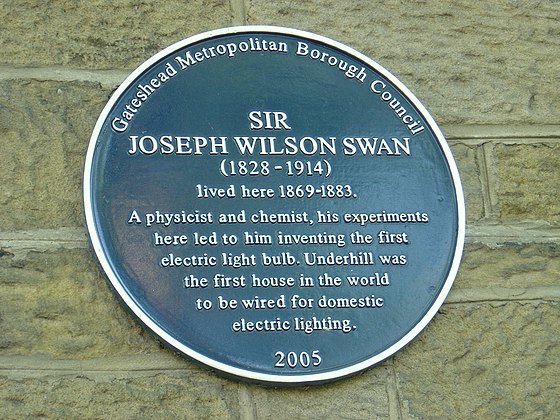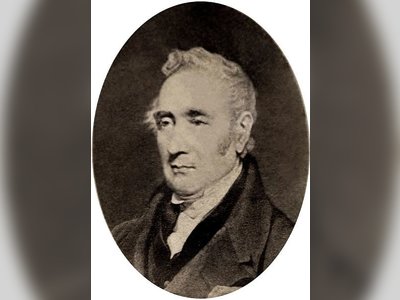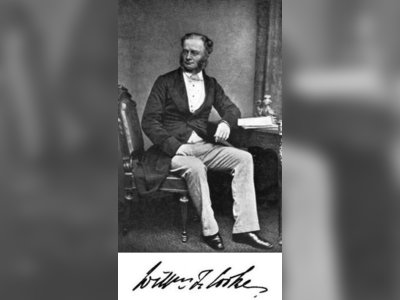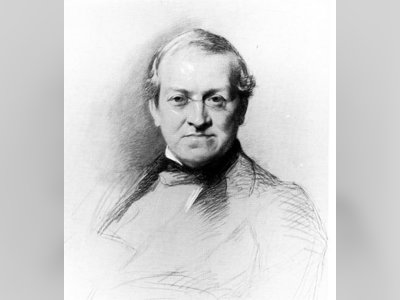Joseph Swan - The Lightbulb
Sir Joseph Wilson Swan and the Dawn of the Electric Age.
Sir Joseph Wilson Swan (31 October 1828 – 27 May 1914), an English physicist, chemist, and inventor, stands as a brilliant example of the quintessential British innovator. Best known as the independent early developer of a successful incandescent light bulb, Swan's enduring legacy extends far beyond the sphere of his famous invention. His life and work have shaped not only the physical infrastructure of modern Britain but also the intellectual fabric of British scientific and engineering heritage.
A Shining Legacy
Swan's groundbreaking work in electric lighting earned him a central place in the annals of British technological history. By developing the first practical incandescent light bulb and illuminating some of Britain's most iconic landmarks with it, Swan revolutionised the way people lived, worked, and interacted, propelling society into an era of unprecedented convenience and efficiency.
His invention, however, was just one part of his broader contribution to science. As a prolific inventor, Swan held numerous patents in diverse fields, including photography and synthetic fibres. His work with carbon filaments, for example, laid the groundwork for later developments in the textile industry.
Swan's unique contributions were widely recognised during his lifetime. Knighted by King Edward VII in 1904 and awarded the prestigious Hughes Medal by the Royal Society, he held influential positions in numerous scientific institutions, including the Institution of Electrical Engineers and the Society of Chemical Industry. Today, his pioneering work continues to inspire successive generations of British inventors and innovators.
Incandescent Achievements: Swan and the Lightbulb
It is in the realm of electric lighting that Swan's contributions to British heritage are most clearly seen. The incandescent light bulb, which Swan independently developed around the same time as Thomas Alva Edison in the United States, was a transformative innovation. With his bulb, Swan ushered in a new era of electric illumination, replacing the unreliable and hazardous gas lighting of the time.
Swan's innovative approach to the light bulb problem began in 1850, when he started experimenting with carbonised paper filaments. Although his early attempts were hindered by a lack of efficient vacuum technology and reliable electric sources, Swan persisted. By 1878, after years of continuous refinement and improvements in vacuum technology, he publicly demonstrated his carbon filament bulb.
Despite initial issues with the high current required and the relatively short lifespan of the bulbs, Swan's invention found immediate applications. His own house, Underhill, became the world's first home illuminated by light bulbs. The Lit & Phil Library in Newcastle was the first public room lit by electric light during a lecture by Swan in 1880. Perhaps most famously, London's Savoy Theatre became the first public building in the world to be entirely lit by electricity in 1881.
In 1883, after a series of patent disputes with Thomas Edison, Swan's strong patents in Britain led to the merger of their companies into the Edison & Swan United Electric Light Company, commonly known as "Ediswan". Ediswan became a significant manufacturer of light bulbs and other electrical products, contributing to Britain's emerging electrical industry.
A Radiant Innovator Beyond Lighting
Outside the realm of electric lighting, Swan's contributions to science and technology were manifold. His work with nitrocellulose in the early 1880s led to the creation of a new process for making synthetic fibres, which found uses in the textile industry. The first practical application of his light bulb technology in the maritime industry happened on the City of Richmond, an Inman Line ship, in June 1881, marking the beginning of electric lighting's use in transportation.
Swan's work also profoundly influenced the field of photography. His invention of the dry plate process and his subsequent development of bromide paper significantly simplified photographic techniques, making photography more accessible to the public.
Moreover, Swan was an early pioneer of the electric safety lamp for miners, a critical innovation in the dangerous field of mining. Despite initial setbacks, his work paved the way for safer working conditions for miners and became a significant part of the history of occupational safety.
A Resonating Influence
Swan's life and achievements exemplify the dynamic interplay between scientific curiosity, technological innovation, and societal transformation, a characteristic thread in the tapestry of British heritage. His legacy continues to resonate in the ongoing development of electric lighting, in the myriad applications of synthetic fibres, and in the persistent quest for innovation that drives British science and industry.
As the dawn of the electric age broke over Britain, it was Swan's light bulb that first pierced the darkness. His work illuminated the possibilities of a new era, and his relentless spirit of invention continues to inspire the ceaseless march of British innovation. Truly, Sir Joseph Wilson Swan stands as a beacon in the landscape of British heritage, a testament to the power of scientific inquiry and human ingenuity.
- Joseph Swanen.wikipedia.org









